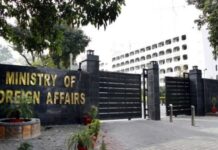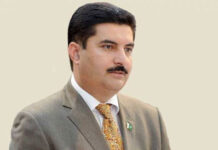ISLAMABAD: Compared to 2.38 percent disabled population registered in the last census in 1998, there were just one million disabled people registered during the 6th Population and Housing Census, said Chief Census Commissioner Asif Bajwa Monday.
Addressing a press conference along with top officials of the Pakistan Bureau of Statistics, Bajwa said that a high-powered Governing Council is supervising compilation of the census data to ensure credibility of the 6th Population and Housing Census.
“Qualified and professional demographers are members of the Governing Council team,” he said, adding that all provinces were requested to send their teams for inspection of data compilation process and technical teams from three provinces, including Punjab, Khyber Pakhtunkhwa and Sindh visited the PBS while the team from Balochistan was yet to arrive.
Bajwa said five international teams visited different areas and had expressed satisfaction over the process of data collection by the census staff.
He said three provinces, including Punjab, Balochistan and Khyber Pakhtunkha had no qualms about the census process while Sindh had raised some objections, which would be removed.
He said that there might be some variation between provisional and final figures of, which “was a routine matter”.
In the last census in 1998, a variation of 1.5 percent was witnessed between provisional and final figures, which were according to international standards.
The chief census commissioner once again clarified that declaration of urban or rural areas was done by the provincial authorities and the PBS followed the boundaries as notified by the provincial governments.
He said that the Local Government (LG) and the Military Lands and Cantonments departments were authorised to specify urban and rural areas.
In Lahore, he said that Lahore district was notified as urban in 2015 and even two union councils of Kasur were included in it, hence the population was recorded at 11,100,000.
In case of Karachi, he said that just seven “mozas” were included in urban areas and the boundaries drawn in 1998 were still valid for the city.
The commissioner said that Afghan refugees living in refugee camps during 1998 census and provided Proof of Residence (PoR) cards in 2005 were also included in the census, resulting in an upward trend in population.
He said that all field operations were conducted by the employees of provincial governments and after collection of data they dispatched the same to the PBS, which is responsible for compilation of results.
He said that provisional population data could be used for upcoming elections only after the amendment to the constitution. “The matter has been referred to the Inter-Provincial Coordination Committee (IPCC), which will send its recommendations to Council of Common Interests (CCI), he added.
Published in Daily Times, September 12th 2017.














